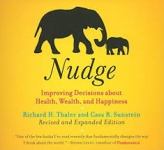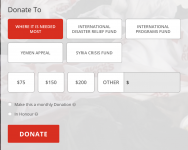In recent years, the knowledge and understanding of behavioural and decision science to help the nonprofit sector better market itself has seen a sharp increase. It has garnered a great deal of interest from management and fundraisers alike.
There are academic centres and businesses set up to further explore and research their application in management, marketing, economics, psychology, policy, and so on. Over the course of the next few weeks, I’ll be digging deeper into the different forms of nudges we can use in legacy marketing to inspire donors to leave a gift in their will.
What are nudges?
Richard H. Thaler and Cass R. Sunstein wrote the nominal book, Nudge (Penguin Books) in 2008.

The authors describe nudges as “any aspect of the choice architecture that alters people’s behaviour in a predictable way without forbidding any options or significantly changing their economic incentives.”
In other words, a nudge must be easy and cheap to avoid such as putting fruit at eye level. However, banning junk food is not.
This week I’ll delve deeper into anchoring.
In simple terms, an anchor is a reference point that influences a person’s decision. A bias can also occur when people rely too much on pre-existing information or the first information they find. For instance, you are shopping at a market and see a lamp at $500 and then you see a second one that costs $200, your mind will view the second lamp as cheap.
Needless to say, anchoring bias can influence how much you are willing to pay.
In fundraising, we use anchoring to help donors make a one-time or a monthly donation by offering gift scales. It gives donors a benchmark so they can decide if they can/want to give within the proposed ranges.

What about its application for legacies?
But when it comes to legacies, this is not common practice. After doing a very quick and superficial scan of legacy pages from organizations in different countries (about 12 websites from reputable national and international organizations), I only found this one example.

The same principle applies to legacies as it does for regular or monthly giving – we need to help donors know what is a typical gift in your organization. But there is a caveat: use anchoring for residual gifts, not pecuniary gifts. Why?
Research shows that when a donor leaves a residual gift, the average gift amount is higher than a pecuniary one. In addition to that, when worded as per the above example, the gift feels less onerous than saying “Even a gift in your will of $25,000 can make a difference”.
The fact is that we tend to underestimate the value of our estate and will relate specific dollar/euro amounts through the lens of our current financial situation. For instance, Beatrice is on a fixed income and owns a home in a big metropolitan city, has investments and a pension plan. She receives two legacy appeals from different organizations who both use anchoring: one is suggesting a gift in her will 3% and the other for a $25,000 bequest.
Applying the same logic used in the lamp example, one can surmise that Beatrice will decide to leave a gift in her will of 3% of her estate even if at the end of the day, the 3% results in a $25,000 bequest.
Moving forward
As you develop your legacy marketing, consider anchoring as a form to nudge and to inspire donors to consider a gift in a will. If you are unsure what percentage to suggest consider testing different percentages to determine what is the most appropriate one for your organization.
Once you have determined the right number, make sure you are consistent in all your marketing materials. Your donors will appreciate the suggestion.


